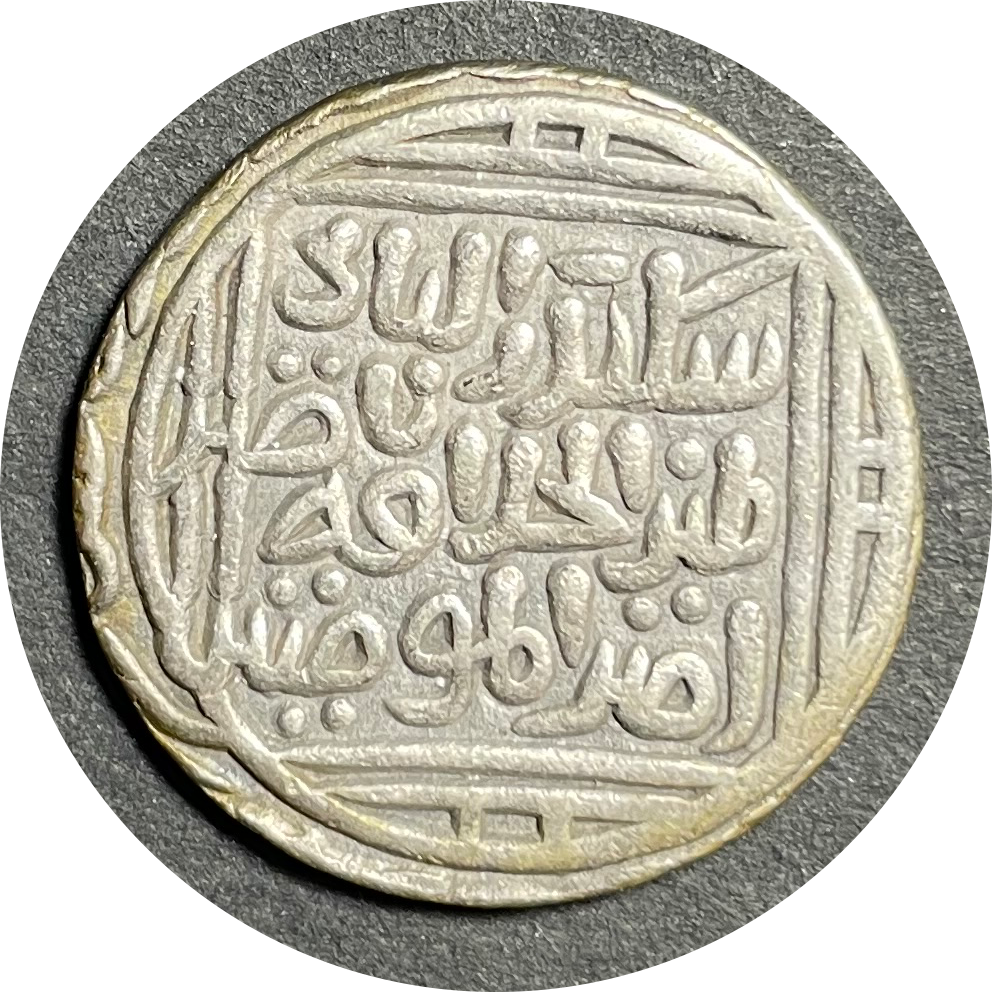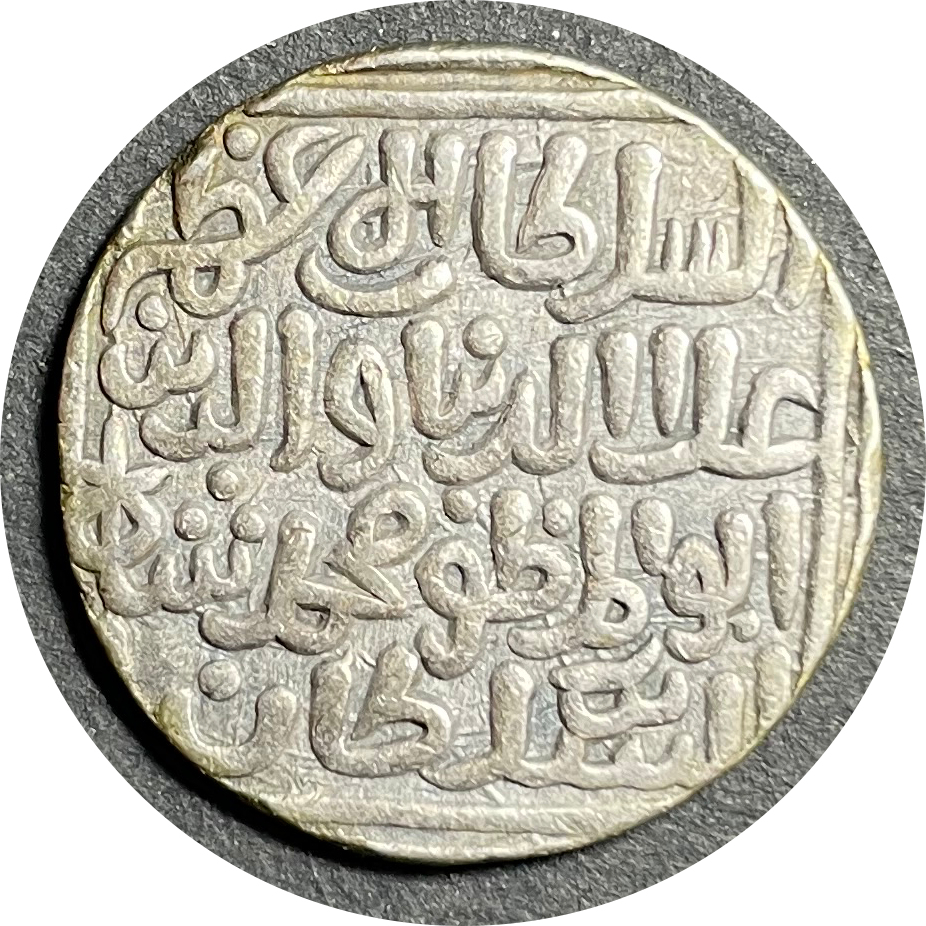

Coin Details
Country:
India
Dynasty:
Delhi Sultanate
Ruler:
Ala ud din Khilji(1296 - 1316)
Mint:
Qila Deogir Mint
Composition:
Silver
External Links
Description
Obverse Legend in Persian: \"Al-sultan al-a\'zam /\'ala al-dunya wa\'l din / abu\'l muzaffar muhammad shah /al-sultan.\"Translation: The Sultan, the magnificent excellence of the world and of faith supreme conqueror, Muhammad Shah the SultanReverse Margin (starting at 12 o\'clock, from right to left): \"Zarb Hazihi Al-Fizzat Bi-Hazrat Dehli Fi Sanat (date)\" Legend in Persian: \"Sikandar al-thani/ yamin al-khilafa/ nasir/ amir al-mu\'minin\"Translation: This silver coin was struck at hazrat (honorable) Delhi in Year (date) Second Alexander defender right hand of the caliphate commander of the faithful
Other Details
Era:
1101 AD - 1700 AD
Shape:
Round
Edge:
Plain
Rim:
Plain
Diameter:
28.37
Weight:
10.77
Face Value:
1
Issued On:
1296

Exquisite
Value 1 Tanka Currency Tanka (1206-1526) Composition Silver Weight 10.77 g Diameter 28.37 mm Thickness 2.4 mm Shape Round (irregular) Technique Hammered Number N#42871 References Rajgor# 994, GG# D225, D226
Comments
The Delhi Sultanate was a Muslim sultanate based mostly in Delhi that stretched over large parts of the Indian subcontinent for 320 years (1206–1526). Five dynasties ruled over the Delhi Sultanate sequentially: the Mamluk dynasty (1206–90), the Khalji dynasty (1290–1320), the Tughlaq dynasty (1320–1414), the Sayyid dynasty (1414–51), and the Lodi dynasty (1451–1526). The sultanate is noted for being one of the few states to repel an attack by the Mongol Empire, and enthroned one of the few female rulers in Islamic history, Razia Sultana, who reigned from 1236 to 1240. Qutb al-Din Aibak, a former Turkic Mamluk slave of Muhammad Ghori, was the first sultan of Delhi, and his Mamluk dynasty conquered large areas of northern India. Afterwards, the Khalji dynasty was also able to conquer most of central India, but both failed to conquer the whole of the Indian subcontinent. The sultanate reached the peak of its geographical reach during the Tughlaq dynasty, occupying most of the Indian subcontinent. This was followed by decline due to Hindu reconquest, states such as the Vijayanagara Empire asserting independence, and new Muslim sultanates such as the Bengal Sultanate breaking off. During and in the Delhi Sultanate, there was a synthesis of Indian civilization with that of Islamic civilization, and the further integration of the Indian subcontinent with a growing world system and wider international networks spanning large parts of Afro-Eurasia, which had a significant impact on Indian culture and society, as well as the wider world. The time of their rule included the earliest forms of Indo-Islamic architecture, increased growth rates in India\'s population and economy, and the emergence of the Hindi-Urdu language. The Delhi Sultanate was also responsible for repelling the Mongol Empire\'s potentially devastating invasions of India in the 13th and 14th centuries. However, the Delhi Sultanate also caused large scale destruction and desecration of temples in the Indian subcontinent. In 1526, the Sultanate was conquered and succeeded by the Mughal Empire.